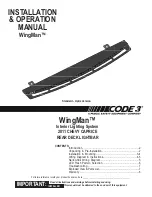
4-16
Starting and driving
area as far forward and as low
as possible.
●
Does not grip the inside or
spokes of the steering wheel
when driving off-road. The
steering wheel could jerk and
injure your hands. Instead drive
with your fingers and thumbs
on the outside of the rim.
●
Before operating vehicle,
ensure that the driver and all
passengers have their seat
belts fastened.
●
Always drive with the floor
mats in place as the floor may
become very hot. Particular
care should be taken if you are
barefoot.
●
Lower your speed when
encountering
strong
crosswinds. With its higher
center of gravity, your vehicle
is more affected by gusty side
winds. Slower speeds ensure
better vehicle control.
●
Do not drive beyond the
performance of the tires even
with 4WD.
●
Sudden acceleration, sharp
steering maneuvers or sudden
braking may cause loss of
control.
●
Install the same size of
winter tires on all four (4)
wheels (such as stud less tires)
or install tire chains to rear
wheels
when
driving
on
slippery roads (e.g., after a
snow and drive carefully using
4WD).
●
Be sure to check the
brakes
immediately
after
driving in mud or water as
specified in
“
WET BRAKES
”
under the heading
“
Precautions
when driving
”
.
●
Whenever
you
drive
off-road through sand, mud or
water as deep as the wheel hub,
more
frequent
maintenance
may be required. For details,
refer to
“
Maintenance under
severe driving conditions
”
in a
separate maintenance booklet.
●
Avoid parking your vehicle
on steep hills. If you get out of
the vehicle and it rolls forward,
backward or sideways, you
could be inured.
















































